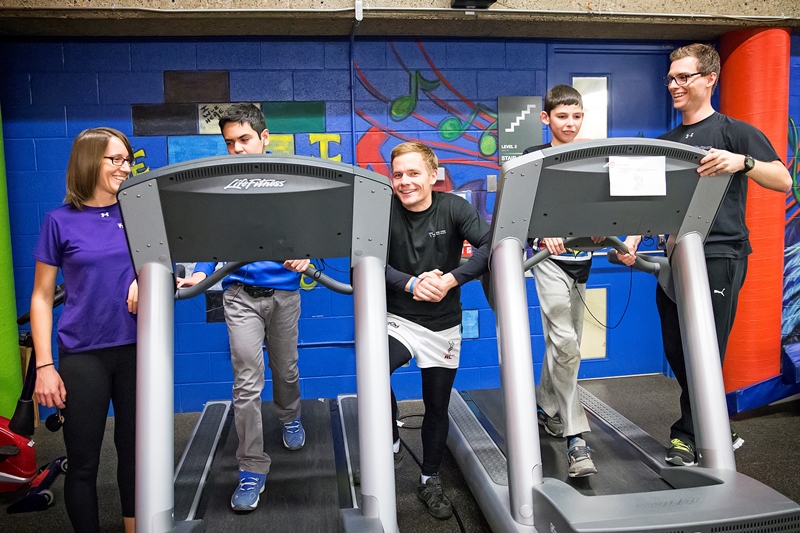
Amanda Ebert (pictured left) was first made aware of parental hidden labour while talking to parents of children who attended the Steadward Centre's Free2BMe program at the University of Alberta. The parents shared their experiences of trying to integrate their children into community-based recreation programming. These conversations spurred Donna and Amanda's research project
The hidden labour done by parents to get disabled children to community-based programming has been documented in a new study by a team of University of Alberta adapted physical activity researchers hoping to show the enormity of the task and help lighten the load.
According to Donna Goodwin, researcher in the Faculty of Kinesiology, Sport, and Recreation and the study's lead author, these efforts are not only hidden from service providers and parents of typical kids, but even from adapted physical activity educators who haven't really unpacked the role parents play in inclusion.
"From locating available and accessible programming to often having to find and pay for someone trained in adapted physical activity to accompany the child, parents are faced with challenges to get their child through the door, and can last throughout the program if they continue their participation," she said.
To remedy this, Goodwin and co-investigator Amanda Ebert held in-depth focus group interviews with parents of children aged 13 to 19. This age group was selected because this is the age where children begin to gain independence, and participation in programming becomes less labour intensive for parents of typical kids.
"Not only did the discussions unveil that inclusion takes an immense amount of effort, but they also illustrated the ableism encountered when parents attempt to engage their children in community-based programs," said Goodwin.
Parents stated they spent considerable time and energy building relationships and educating staff members and managers about the biases that labeled their children as disabled. In some cases where parents were able to pass their children as "able enough" to participate, staff members would ensure the child was safe, but wouldn't actually engage them in a meaningful way.
Parents also stated that if they did not find the programming to have any therapeutic value, they would make the guilt-filled decision to stay home as opposed to taking on the multilayered labour to get their children into a community-based program.
"Even as an adapted physical activity educator, I was shocked to hear the experiences of these parents. The ableism they encountered, whether it was conscious or not, has an impact for both the parents and the children attempting to access these programs."
"Everyone has a right to recreation and sport programming and ongoing education is needed to help make these programs accessible to all levels of abilities."
Starting Conversations
As a physical activity practitioner and former Faculty of Kinesiology, Sport, and Recreation graduate student, Ebert made efforts to increase education about parental hidden labour and to start conversations around changing policy.
"The response to the research outcomes has been very encouraging. We're finding that practitioners want to make their programs and facilities more inclusive, and simply being aware of the parental hidden labour will help them in relationship building with these families."
Although the desire from practitioners to move away from ableist tendencies is there, Ebert said that much of the feedback and discussion around making programs more inclusive is often met with policy-related hurdles.
"I hope this research helps take the issue back to a more pragmatic level," said Ebert. "Instead of saying, 'okay, we have a ramp at our facility and that makes us inclusive,' practitioners can talk about what other barriers exist. Maybe it's modifying the intake form for programs to include sections for disabled children's information that ask the right questions to make it easier for everyone to have these kids attend community programming."
For Goodwin, changes also need to be made at the policy level to lessen parental hidden labour and to remove ableism from community programming.
"Ultimately, I'd like to see a commitment from organizations to say that they will do whatever is required to make their programs more inclusive for all families," she said. "Part of that is building relationships with these families and asking them 'what will it take to make this work?'
"If that can happen, we can start to see positive changes that make these facilities and programs become an inclusive community for all."
The paper, Physical Activity for Disabled Youth: Hidden Parental Labor, was published in Adapted Physical Activity Quarterly.